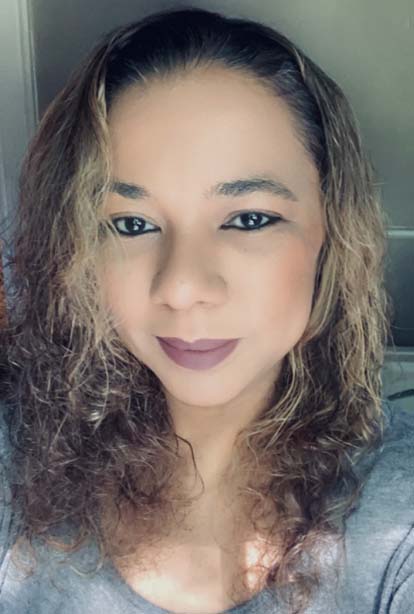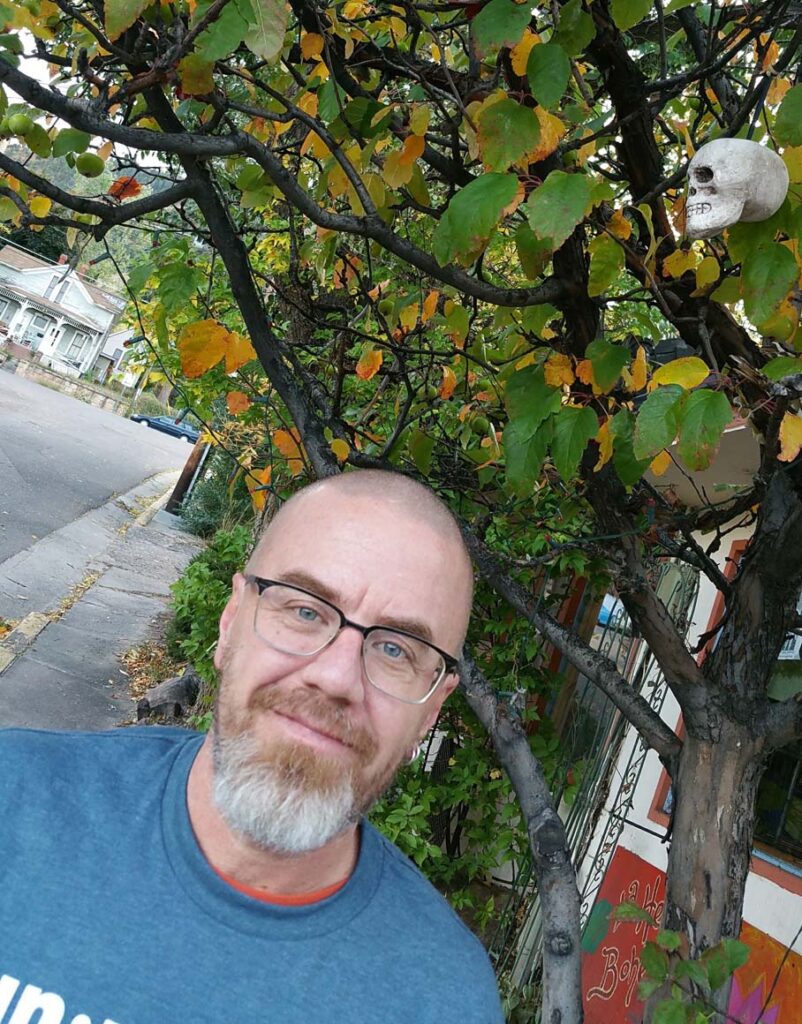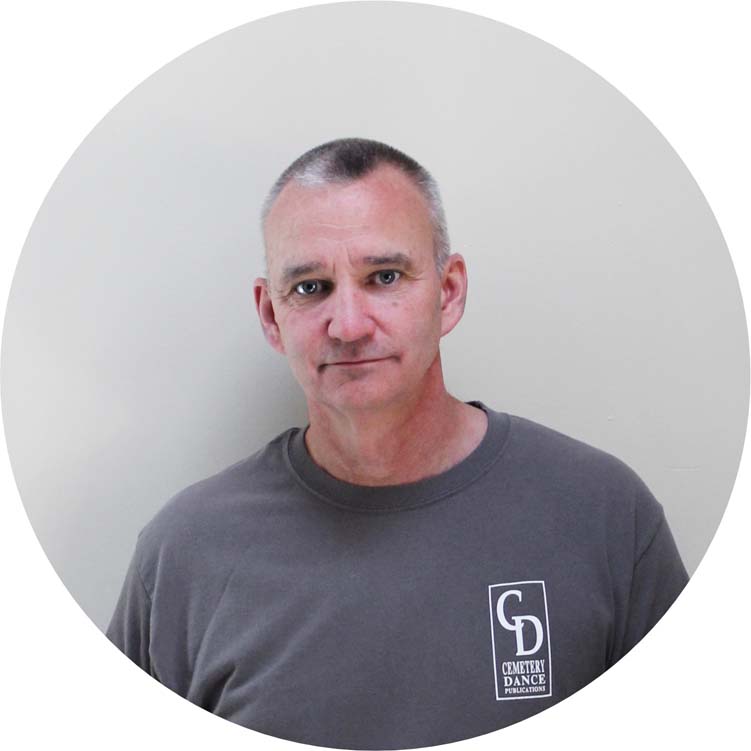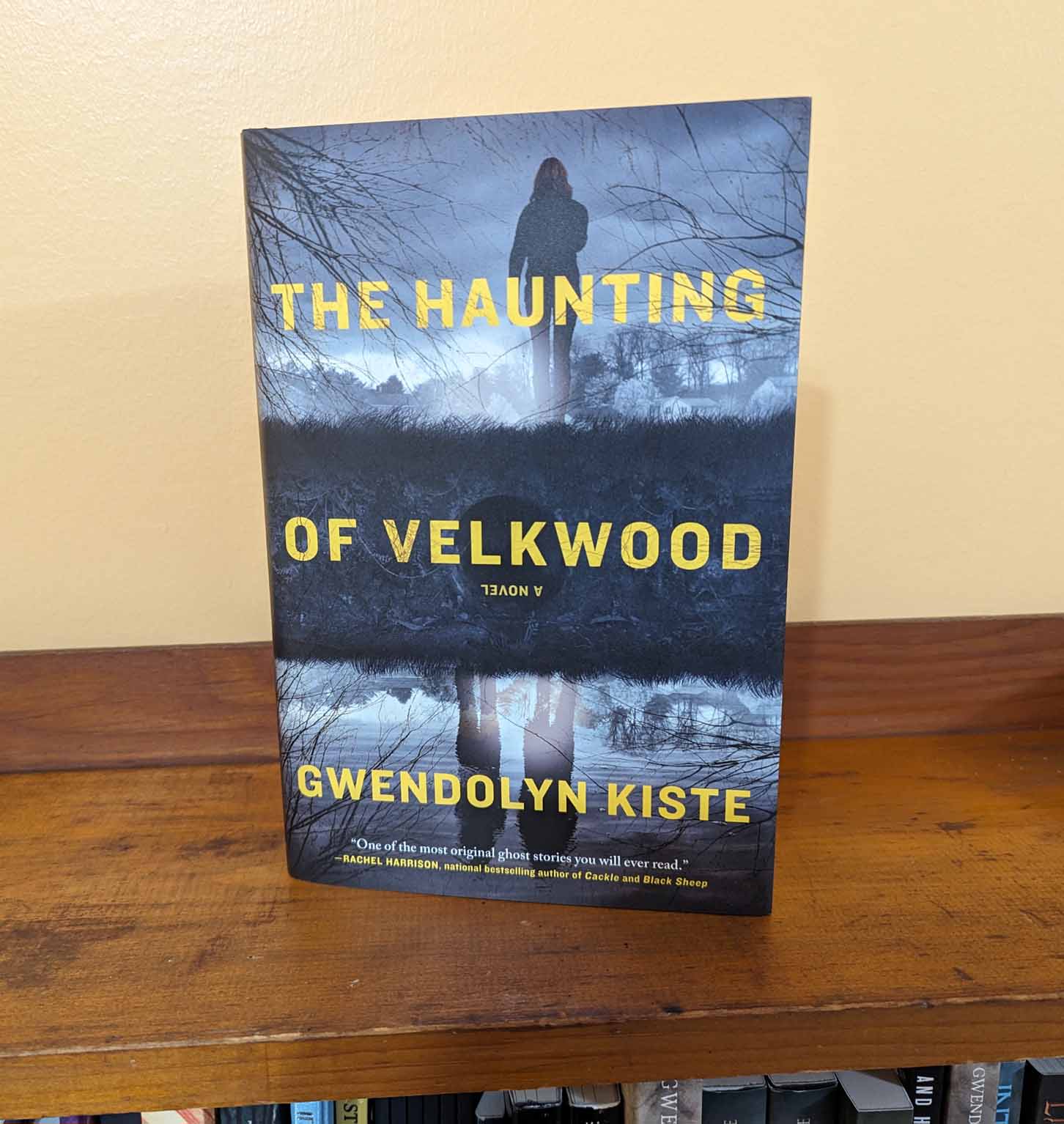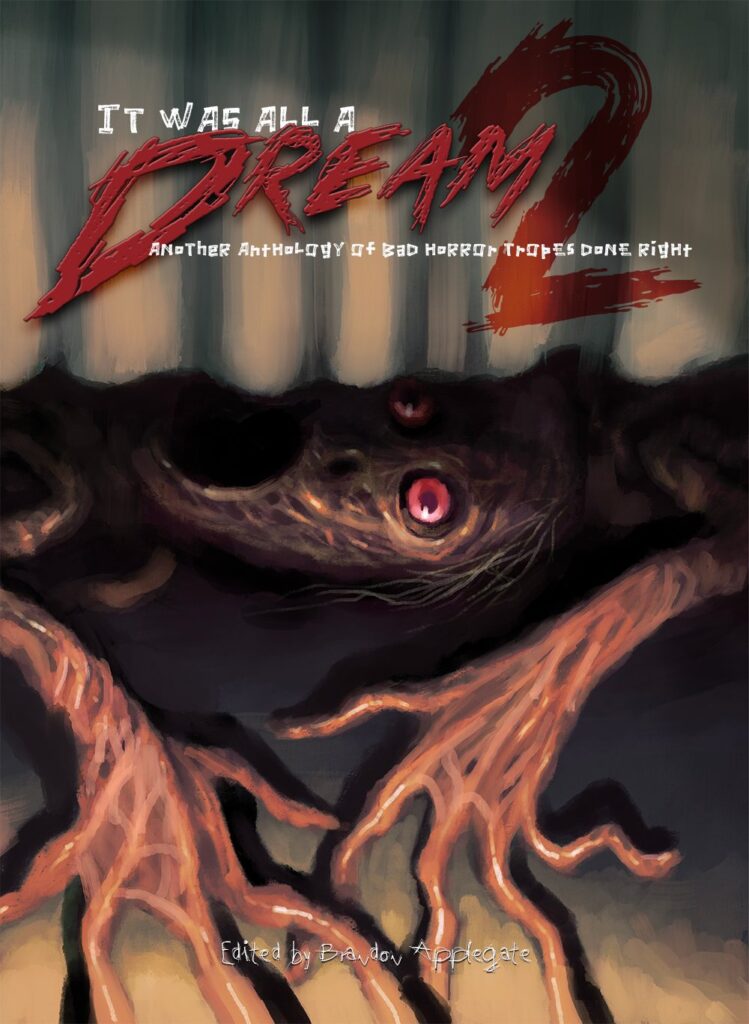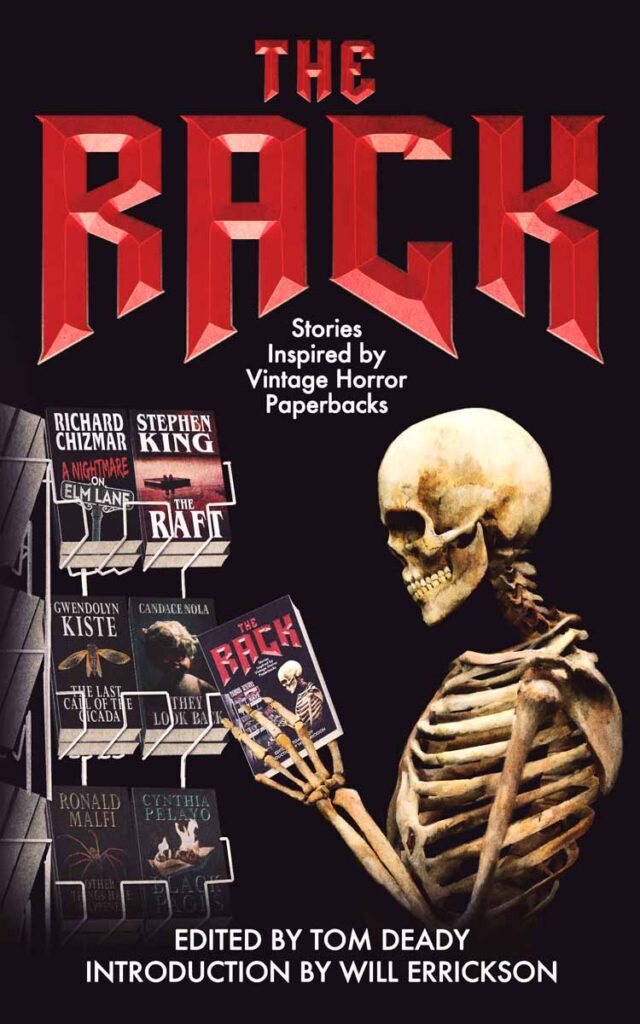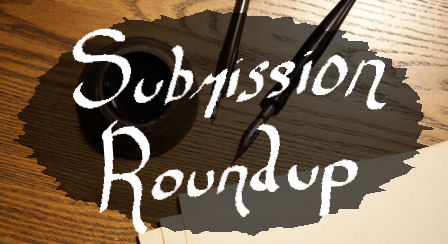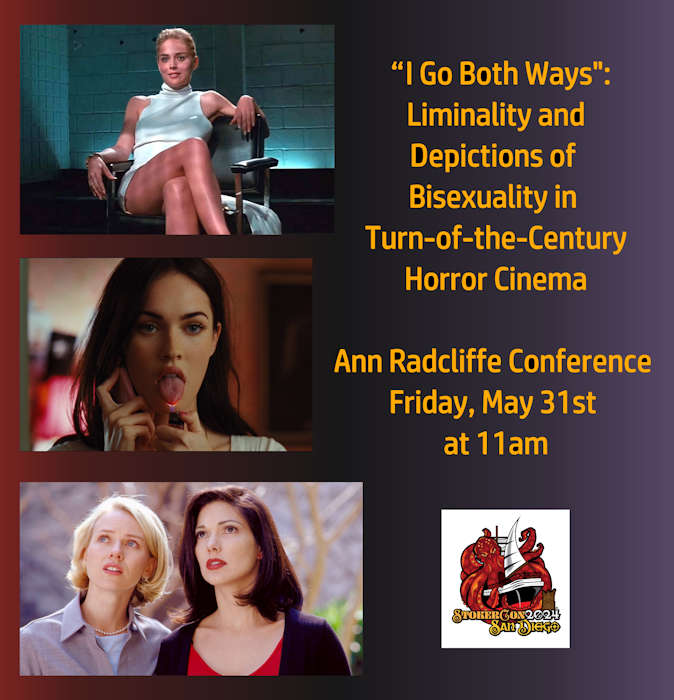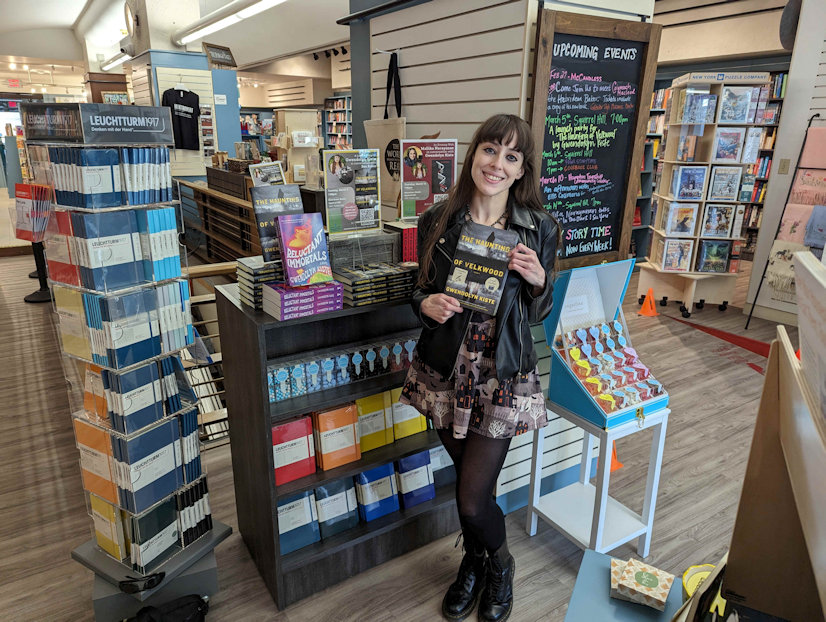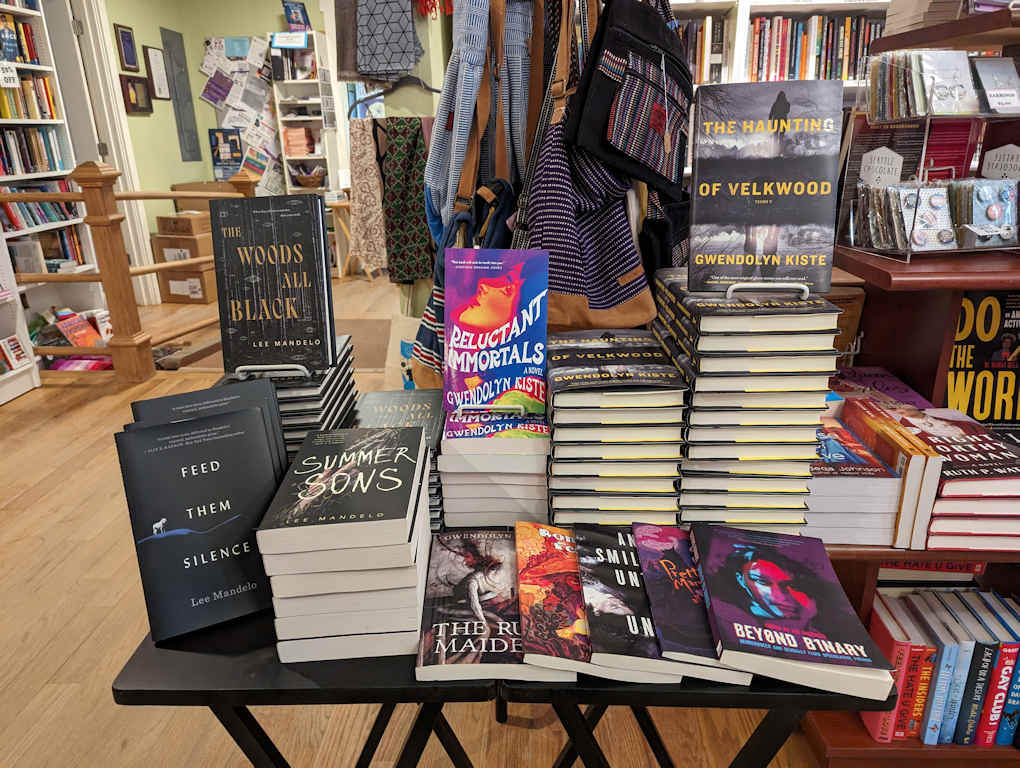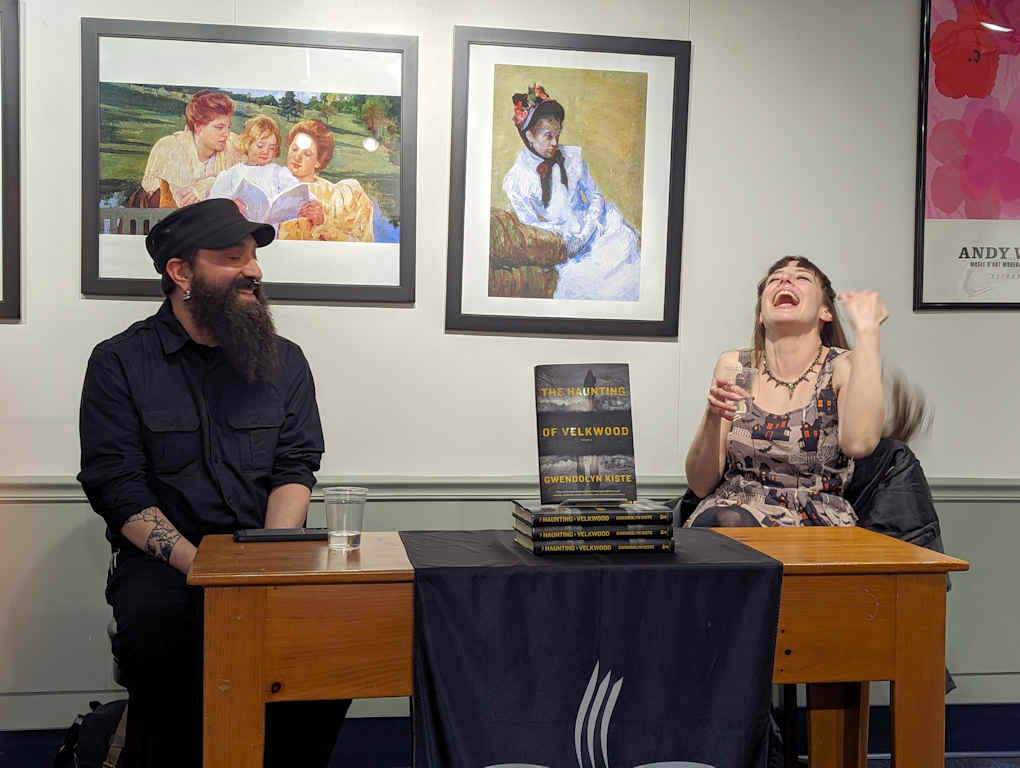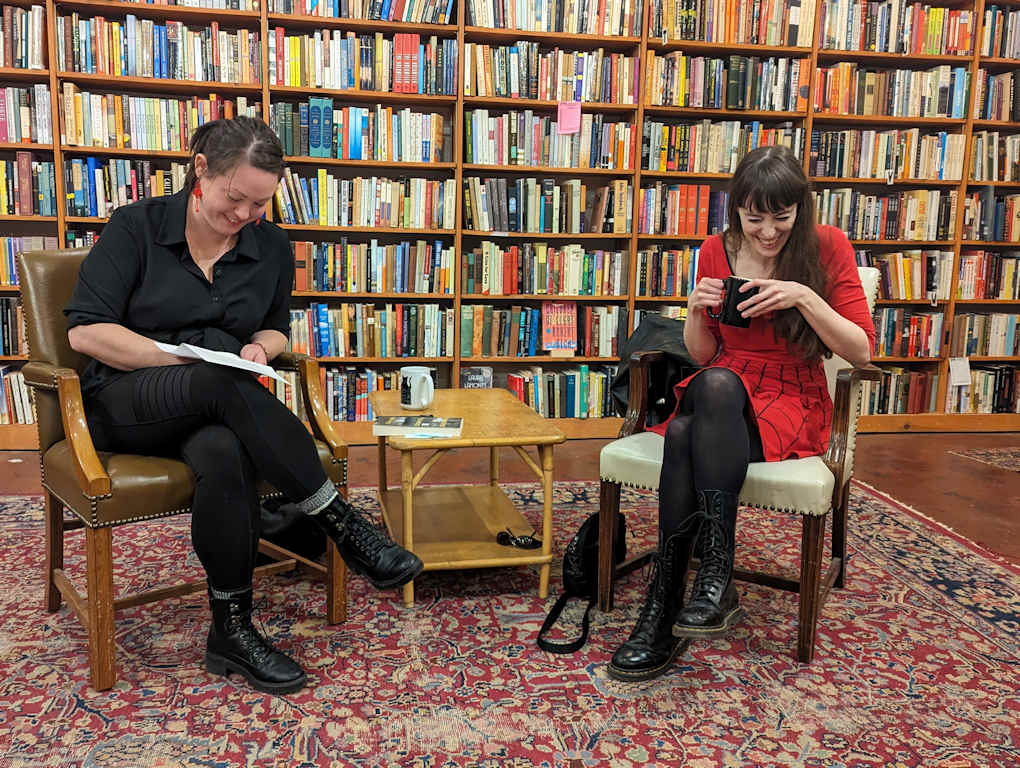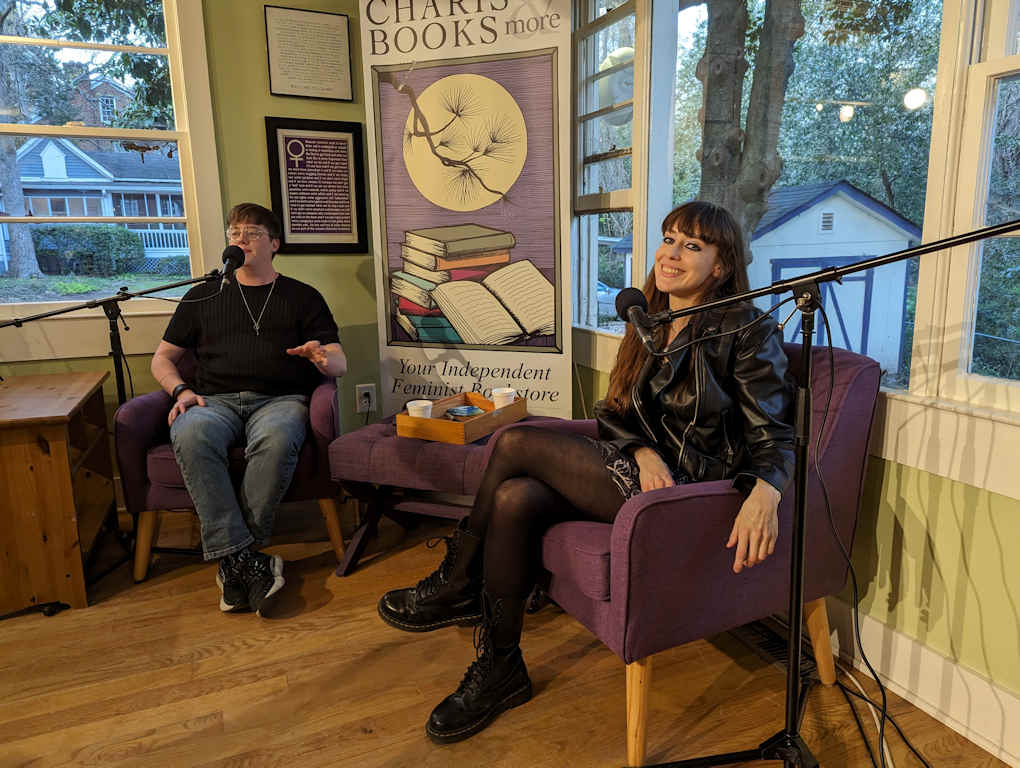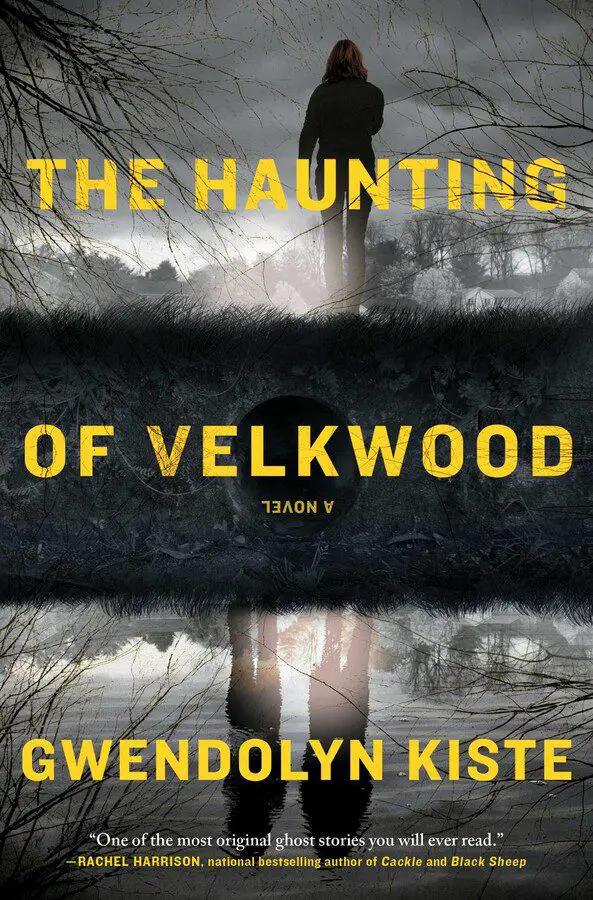Welcome back for part two in our roundtable interview series featuring authors of The Rack anthology! Last week, we discussed the inspiration behind their fabulously fearsome stories. This week, we talk all about the appeal of vintage horror.
And with that, let’s take it away!
What do you think the enduring appeal of vintage horror paperbacks are? If you met a new horror fan who wasn’t familiar with vintage horror, how would you introduce them to it?
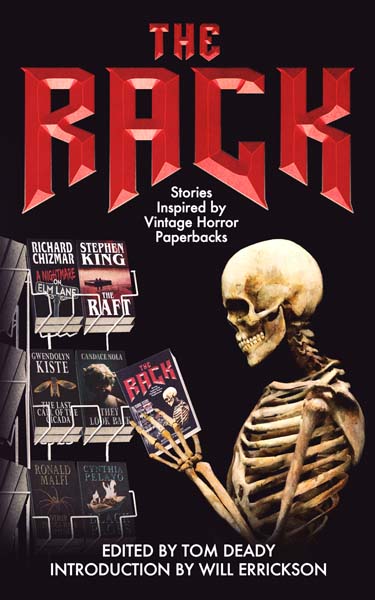 CANDACE NOLA: Thinking about them now, the appeal was knowing that I was about to read a really good story that was sure to be both fun and scary. Most could be read in single sittings, the action was fast-paced and the situations were always bizarre enough to make it a fun read while keeping it scary.
CANDACE NOLA: Thinking about them now, the appeal was knowing that I was about to read a really good story that was sure to be both fun and scary. Most could be read in single sittings, the action was fast-paced and the situations were always bizarre enough to make it a fun read while keeping it scary.
For a new fan, I would start with finding out what tropes they liked the most and suggest a few based off those concepts first. To pick the books, I would go by cover alone because the vintage paperbacks had some of the best covers out there. Then just let the magic happen.
REBECCA ROWLAND: I think the stylistic nature of many of the covers is what cements many of the books in our nostalgia. Straub’s Ghost Story is a beautiful classic, but it’s the paperback cover with its funky-swirled title and lonely barren tree among the snow that I think of first. Hendrix really nailed it with Paperbacks from Hell: that would be the place I’d point a new horror fan, for certain.
For me personally, it’s the time period that those books evoke in my mind, the memories of curling up on the couch and getting lost in a book, the freedom of that—not just because I was a pre-teen or teenager and had no real responsibilities, but because there was no internet or even cable television to distract me. In the 70s and 80s, imagination, not technology, was king, and at the risk of sounding crotchety, I think that made it a superior place in time to be, at least for enjoying literature.
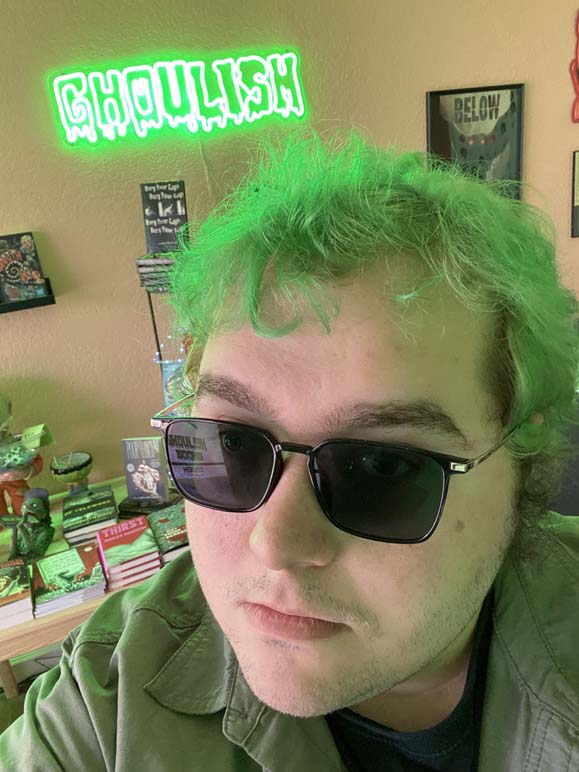 MAX BOOTH III: Personally, I feel like a lot of the vintage horror paperbacks are more uhhh unhinged than modern mainstream horror. They’re harder to predict. Plus, most of them feel like these hidden secrets waiting to be uncovered, you know? It’s easy to be lazy and just think of people like King when it comes to horror back then, but the reality is there are countless other horror authors who are largely forgotten, so it’s exciting and important to still read these people and keep their stories alive.
MAX BOOTH III: Personally, I feel like a lot of the vintage horror paperbacks are more uhhh unhinged than modern mainstream horror. They’re harder to predict. Plus, most of them feel like these hidden secrets waiting to be uncovered, you know? It’s easy to be lazy and just think of people like King when it comes to horror back then, but the reality is there are countless other horror authors who are largely forgotten, so it’s exciting and important to still read these people and keep their stories alive.
Definitely would have to start them off with The Elementals, and I would get them excited by telling them the dude who wrote Beetlejuice is the author. Easily one of my favorite novels ever.
CHRISTA CARMEN: The enduring appeal of vintage horror paperbacks are probably that they are so eclectic! That variety and range was beneficial when choosing a book off the rack in the 70s and 80s, but also today, when readers are nostalgic for the types of stories that may very well have turned them into horror fans in the first place. I think that’s why this anthology is getting such a great reception already; the stories in The Rack are as diverse and unexpected as the vintage paperbacks of yore were for two-plus decades!
If I were to meet a new horror fan who wasn’t familiar with vintage horror, I would have to start them with Rosemary’s Baby. Cliché, yes, but hear me out… you simply CANNOT move on to the endless (and endlessly entertaining) subgenre of demonic baby horror until you’ve read the OG.
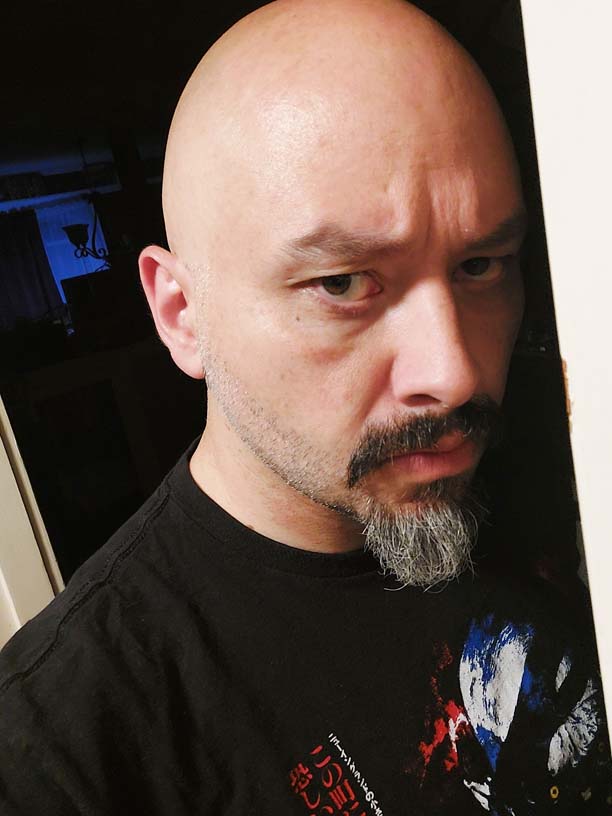 STEVE VAN SAMSON: I love physical media. In a way, I think paperbacks are 100% comparable to the allure of vinyl records. You have this perfect physical thing, (usually) covered in absolutely gorgeous art. Even when you put the thing down, it leaves behind a tangible echo on your skin—a memory of weight, texture, smell, etc. This tactile information might not have registered to us when we were younger as physical books and records were the only kind there were. But going back to them now, I think a lot of us are discovering just how much of the experience is missing from a downloadable file.
STEVE VAN SAMSON: I love physical media. In a way, I think paperbacks are 100% comparable to the allure of vinyl records. You have this perfect physical thing, (usually) covered in absolutely gorgeous art. Even when you put the thing down, it leaves behind a tangible echo on your skin—a memory of weight, texture, smell, etc. This tactile information might not have registered to us when we were younger as physical books and records were the only kind there were. But going back to them now, I think a lot of us are discovering just how much of the experience is missing from a downloadable file.
I can think of no better introduction to all this than by finding a very special kind of book shop. The sort with shelves and shelves (or better yet, aisles) full of these old mass market treasures. You may not recognize any of the author names, but you are bound to find some titles and artwork that speak to you. And really, that’s exactly how we did it back in the day. You know, when we all rode dinosaurs.
CLAY MCLEOD CHAPMAN: There’s a certain devil-may-care attitude to it, I guess. Maybe less preciousness? I feel it’s akin to going to the video store. The pre-Blockbuster era, mom ‘n pop video shops, where you could wander down the horror aisle, look at all the cool covers, and make a decision on what to watch tonight based solely on the image seared on the front. You could take a risk. Sometimes it paid off, other times not, but that didn’t necessarily matter. You were always in for a fun time. Best case scenario, you walk away reading your most favorite book in the whole wide world. Worst, you just had yourself a total lark of a time. Not a bad gamble, in my book.
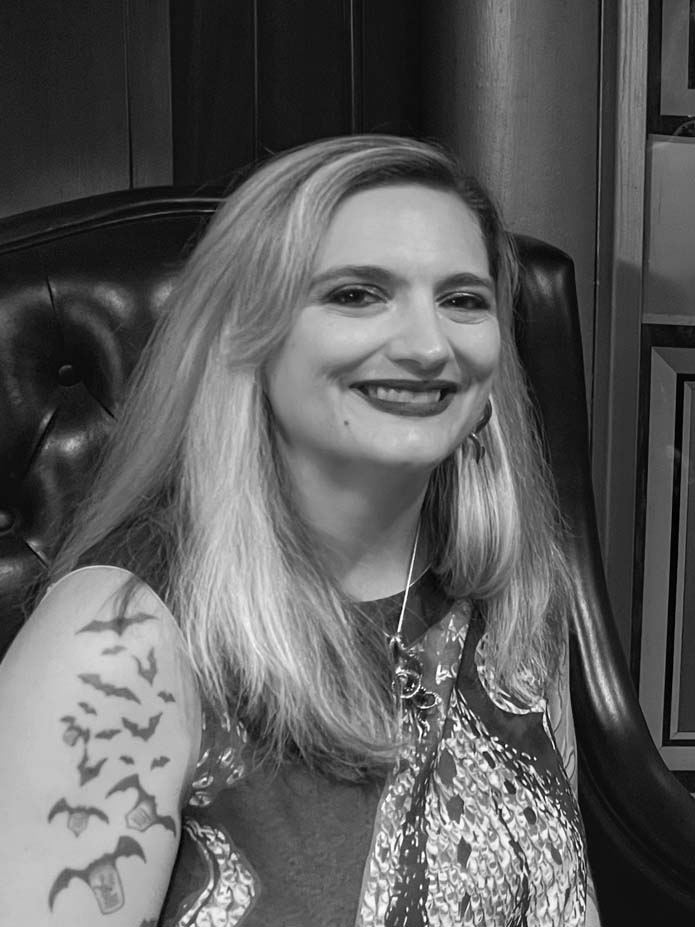 KRISTIN DEARBORN: The Paperbacks from Hell era was a blessing and curse for the genre. Amid some of the greatest works of fiction was a lot of pure dreck, a lot of books published because horror was hot and publishers wanted to find “the next Stephen King”. It’s interesting what the genre was and wasn’t willing to take chances on: there aren’t a lot of women or POCs, but we have haunted houses, killer kids, animals attacking, mad scientists, splatter punk…We had Robert McCammon, Richard Laymon, Peter Straub, Michael McDowell, Jack Ketchum, Ramsey Campbell…but also Kathe Koja, V.C. Andrews, and Anne Rivers Siddons. To answer the question, I think if I were to introduce a new fan, I’d start with “what are you into?” Confident that whatever their literary pleasure, there’s something for them with a lurid cover.
KRISTIN DEARBORN: The Paperbacks from Hell era was a blessing and curse for the genre. Amid some of the greatest works of fiction was a lot of pure dreck, a lot of books published because horror was hot and publishers wanted to find “the next Stephen King”. It’s interesting what the genre was and wasn’t willing to take chances on: there aren’t a lot of women or POCs, but we have haunted houses, killer kids, animals attacking, mad scientists, splatter punk…We had Robert McCammon, Richard Laymon, Peter Straub, Michael McDowell, Jack Ketchum, Ramsey Campbell…but also Kathe Koja, V.C. Andrews, and Anne Rivers Siddons. To answer the question, I think if I were to introduce a new fan, I’d start with “what are you into?” Confident that whatever their literary pleasure, there’s something for them with a lurid cover.
LARRY HINKLE: While vintage horror paperbacks have never gone out of style (at least not with the cool kids), they got a huge signal boost with Paperbacks from Hell, which introduced them to a new generation. Those covers!
The first one I’d tell people to read would be The Rack, of course! After that, Night Shift. But there are so many other good ones. All the early books from McCammon (Swan Song, Stinger, etc.) Skipp and Spector’s stuff, including Book of the Dead I and II, and my favorite of theirs, The Bridge. (My story in The Rack owes a little to that one.) Barker’s Books of Blood, Landsdale’s first collection, By Bizarre Hands, The Dark by James Herbert…
JEFF STRAND: Nostalgia! I have extremely fond memories of that time. The excitement of rushing to the horror section of a used bookstore, desperately hoping they’d have R. Patrick Gates’ first novel, Fear. (And five years after I began the search, one of them did!) As for the books themselves…if I had to make an extensive list of my all-time favorite horror novels, the truth is that very few of them would have holograms or skeletons on the cover. The horror boom ended because the good stuff became more and more difficult to find in the flood of product, so if I were introducing a new horror fan to this era, I’d probably discourage them from just randomly choosing books that had cool covers.
TOM DEADY: For me, and probably a lot of people from my generation, it’s nostalgia. To be honest, a lot of the books don’t hold up well. It’s not just the men wearing smoking jackets and such, there is a lot of racism and misogyny in some of those stories that simply isn’t palatable.
Grady Hendrix made it very easy with his sensational Paperbacks From Hell. It’s a crash course on exactly the type of vintage horror we’re talking about. Of course, I would also shamelessly point to The Rack as a solid introduction as well!
What’s next for you? What projects do you have coming up? Also, where can we find you online?
CANDACE NOLA: Next for me, I have Moloch, a new novella releasing in late October, if all goes well. That will be followed by a second Hank Flynn novel, then Bishop 3 and a surprise collection in the spring.
Find me on all social media as Candace Nola on Twitter and Blue Sky, CNola.Author on Instagram, and @UncomfortablyDark on TikTok, My website is www.Uncomfortablydark.com.
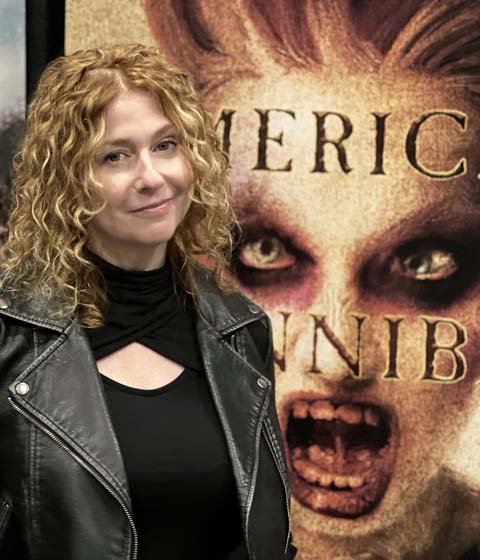 REBECCA ROWLAND: I have about eight new short stories coming out in the next nine months, including a piece in Stephen Kozeniewski’s werewolf anthology Strange New Moons and one in Carol Gyzander and Rachel Brune’s Dark Spores. Both have slithers of body horror in them, which speaks to the lasting impact of King’s Long Walk.
REBECCA ROWLAND: I have about eight new short stories coming out in the next nine months, including a piece in Stephen Kozeniewski’s werewolf anthology Strange New Moons and one in Carol Gyzander and Rachel Brune’s Dark Spores. Both have slithers of body horror in them, which speaks to the lasting impact of King’s Long Walk.
I can be found on my website RowlandBooks.com or on Instagram @Rebecca_Rowland_books.
MAX BOOTH III: My next novel, I Believe in Mister Bones, comes out in October through Apocalypse Party. Other than that, just working on the books we’re putting out through Ghoulish Books, and preparing for next year’s Ghoulish Book Festival. Badges are on sale right now, by the way: https://ghoulish.rip/product/badges/
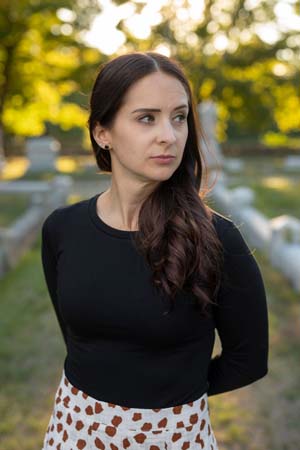 CHRISTA CARMEN: My second novel with Thomas & Mercer, Beneath the Poet’s House, comes out December 10th. Beneath the Poet’s House is set in Providence and deals with a modern-day haunting stemming from the real-life romance between Edgar Allan Poe and Sarah Whitman. Preorders are up now, and I’ll be doing several events for the book in December and January; dates will be up soon on my website.
CHRISTA CARMEN: My second novel with Thomas & Mercer, Beneath the Poet’s House, comes out December 10th. Beneath the Poet’s House is set in Providence and deals with a modern-day haunting stemming from the real-life romance between Edgar Allan Poe and Sarah Whitman. Preorders are up now, and I’ll be doing several events for the book in December and January; dates will be up soon on my website.
Author Website: www.christacarmen.com
Goodreads: https://www.goodreads.com/author/show/15179583.Christa_Carmen
Amazon Author Page: https://www.amazon.com/author/christacarmen
Facebook: https://www.facebook.com/christaqua
Twitter: https://twitter.com/real_christaqua
Instagram: https://www.instagram.com/christaqua/
TikTok: https://www.tiktok.com/@houseof1000christas
YouTube Channel: https://www.youtube.com/channel/UCocJVk5dPP2T_CdTnDQyRLQ
STEVE VAN SAMSON: My next release is a longish novella about some kids who battle a boogeyman type monster in their own house. It’s my first YA thing and is going to be part of the SHIVERS series by Weird House Press. It features amazing cover art by Derek Rook and should be out this October. Check out www.roughhousepublishing.com for deluxe hardcovers of both “Black Honey” and “Mark of the Witchwyrm”. You can follow me on Instagram (vansamsonsteve) and Facebook (SVanSamson).
CLAY MCLEOD CHAPMAN: I’ve got a new novel coming out in January called WAKE UP AND OPEN YOUR EYES… with no die-cut cover, sadly. One day. You can find me on (deeeep breath) IG, Twitter, Facebook, Threads, Bluesky, TikTok, anywhere and everywhere while I try to figure out how best to navigate social media. Or just here: https://claymcleodchapman.com/
KRISTIN DEARBORN: You can find me online at www.kristindearborn.com, or on instagram at @kristindearbornhorror
Up next I have a short story called “Ghosted” in the New England Horror Writers anthology Wicked Abandoned. Other than that I’m puttering around with some novellas, and trying to find a good home for a novel about evil changeling children.
LARRY HINKLE: I just finished my editor’s revisions to The Eris Ridge Trail, my very first novella! It’s out with beta readers now, and then I’m looking for some blurbs. (Hint hint!) I’d never written anything longer than 5,700 words before, but this bad boy clocked in at a little over 35k. It brings back characters from three stories in my collection, although it’s a standalone, so you don’t need to have read those stories beforehand. (Although you know you want to!) I couldn’t have done it without constant encouragement/nagging from editor of The Rack Tom Deady and fellow contributor Christa Carmen, so if you hate it, blame them. It should be out in late February/early March, 2025.
You can find me at www.thatscarylarry.com. I’m on most of the socials at some variation of ThatScaryLarry.
JEFF STRAND: My latest short story collection, Snuggling the Grotesque, just came out. My novel Bloodsucker County, featuring a monster you can probably figure out from the title, will be out by the end of the year. And the third book in my Eek! series of middle grade horror novels, Finders Keepers, will be in bookstores April 2025.
TOM DEADY: For my own writing, I have a western horror duology coming out from Cemetery Dance later this year called A Blade to Silence the Screams. Next year I’ll be publishing the second book in the Hopedale Mystery Series (book one was The Clearing) and finally the sequel to Eternal Darkness. I am also pretty far along in the planning stages of Volume Two of The Rack, and the table of contents is going to be just as stacked as the original.
My website is www.tomdeady.com but I’m also on Facebook, TikTok, and Instagram.
Thank you so much to these wonderful contributors of The Rack for being part of my author roundtable! Be sure to pick up a copy of the anthology, and enjoy our vicious, vintage vibes!
Happy reading!



